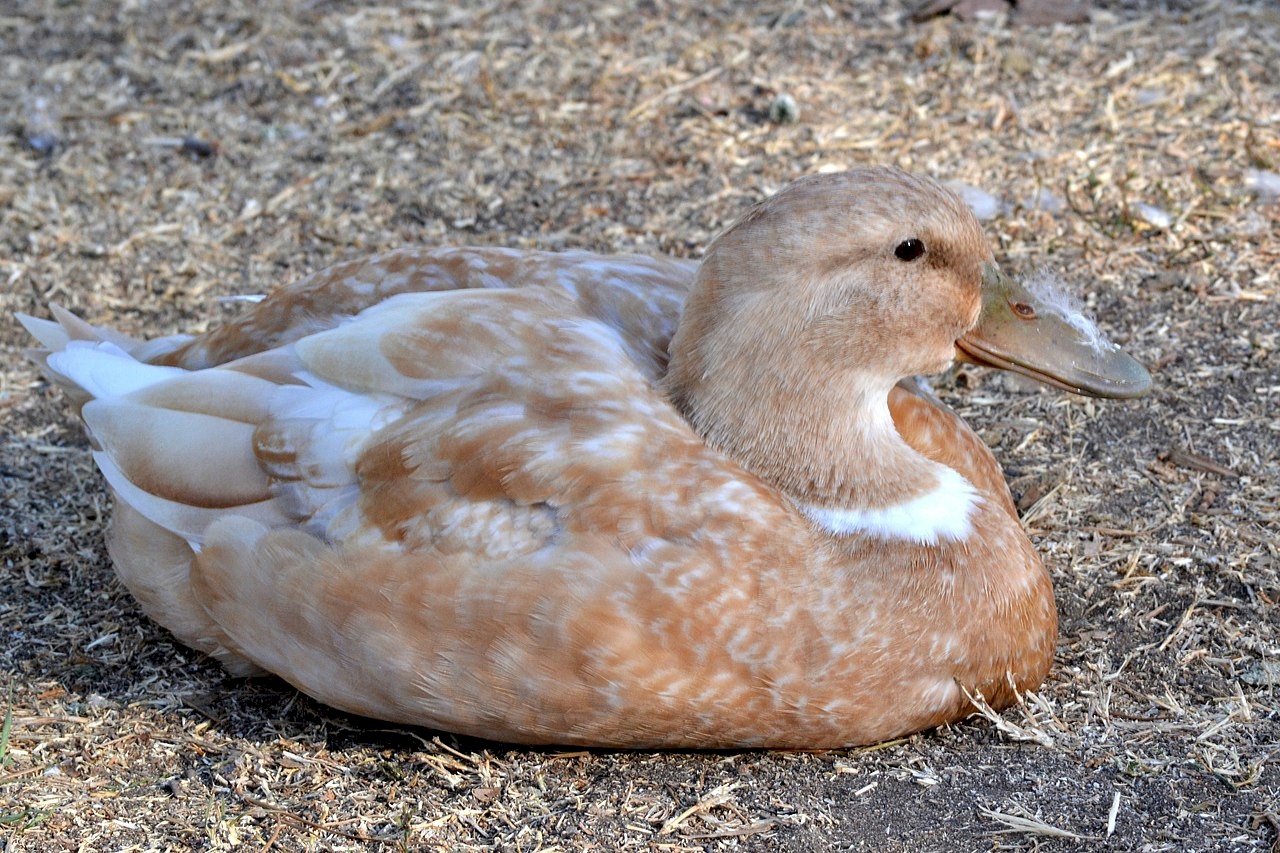Duck Breeds
 |
| Photo Source: Wikipedia.org |
The Buff Orpington duck is prized for its meat and egg production, with the ability to lay up to 220 eggs a year. It was created by William Cook of Orpington, Kent, UK, from a selection of mis-marked Blue Orpington ducks and other breeds such as Cayuga, Indian Runner, commercial Aylesbury and Rouen. The breed was introduced to the public in 1897 and was admitted to the British Poultry Standard in 1910 and the American Poultry Association's Standard of Perfection as the 'Buff Duck' in the Medium class in 1914.
It is important to note that the Buff Orpington is considered a threatened breed by the American Livestock Breeds Conservancy, which is working to protect and preserve this unique breed.
The Orpington duck is available in three color varieties: Buff, Blond, and Brown, with the Buff color being the result of a blue dilution gene which can result in all three color variations appearing in the offspring.
Buff Orpington Ducks are medium-sized ducks that range between 7 and 8 pounds in weight. The bird is large and broad, with an oval head and medium-length bill, as well as a gracefully curved neck. The Buff duck's body carries itself 20 degrees above horizontal, and its wings are short and curved.
It has buff plumage and has a yellowish snout and feet, as well as brown eyes. Female bills are brown-orange, whereas drakes' bills are yellow. In the U.S., there existed a blue variety of Orpington duck, but it was most likely absorbed into the Blue Swedish breed. Uniformity is key with regard to color patterns. Typically, fawn-buff is considered ideal with the drakes having a fawn-buff or seal-brown head. The bill of the drake is yellow while the hen has a brownish-orange bill. They have orange feet and legs. Buff Orpington ducks are typically lighter than their khaki-coloured counterparts as a result of a recessive sex-linked dilution factor. It was found that a deficiency of vitamin U resulted in widespread deposition of black pigment in the feathers of buff orpington ducks, a breed normally not known for black pigmentation.
